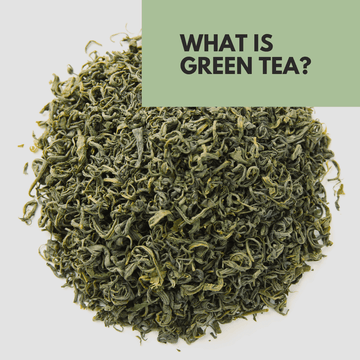
Green tea is a type of tea made from the leaves and buds of the Camellia sinensis plant, the same plant used to produce black tea, oolong tea, and white tea. What distinguishes green tea from these other types of tea is the way it is processed and its minimal oxidation.
Here's how green tea is typically made:
-
Harvesting: Green tea leaves are plucked from the tea plant. The timing of the harvest can affect the flavor and characteristics of the tea.
-
Withering: The freshly harvested leaves are spread out and allowed to wither, which involves air drying or exposure to sunlight. This step helps reduce moisture content in the leaves.
-
Heat Treatment: Green tea leaves are quickly heated, either through steaming or pan-firing. This step inactivates enzymes that would otherwise cause oxidation. The choice of method can influence the flavor profile of the tea.
-
Rolling: The leaves may be rolled or shaped into various forms, such as balls or needles, depending on the desired style of green tea.
-
Drying: The tea leaves are dried to remove any remaining moisture and to preserve their flavor and aroma.
The minimal processing and lack of oxidation give green tea its characteristic green color, mild flavor, and subtle grassy or vegetal notes. It also retains a higher concentration of antioxidants, particularly catechins like epigallocatechin gallate (EGCG), compared to other types of tea.
Green tea comes in various varieties and styles, each with its own unique flavor and aroma profiles. Some well-known types of green tea include Japanese green teas like Sencha and Matcha, Chinese green teas like Dragon Well (Longjing) and Gunpowder, and other regional variations from countries such as Korea and Vietnam.
Green tea can be enjoyed hot or cold, and it's often consumed plain or with a touch of honey or citrus. Many people also use green tea in culinary applications, such as in cooking and baking. Its potential health benefits, along with its pleasing taste, have made it a popular beverage choice worldwide.





